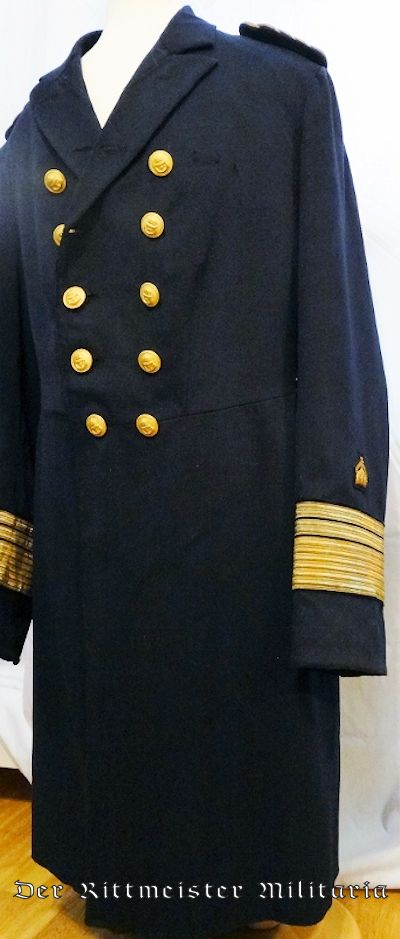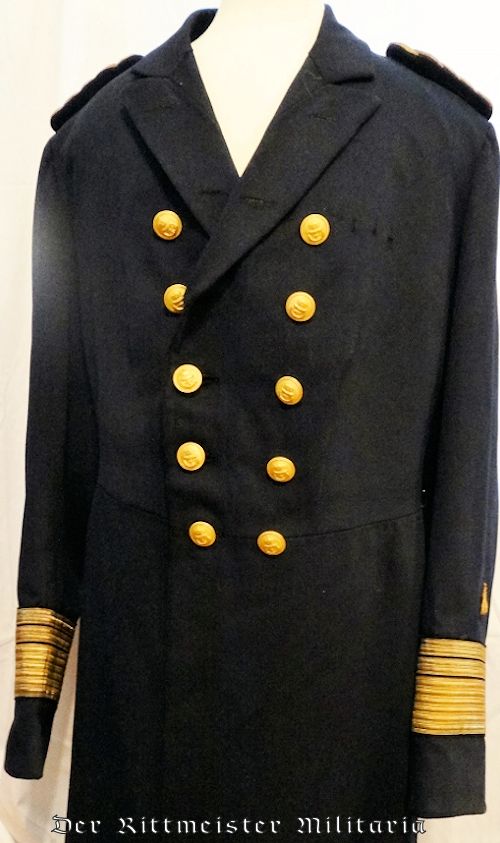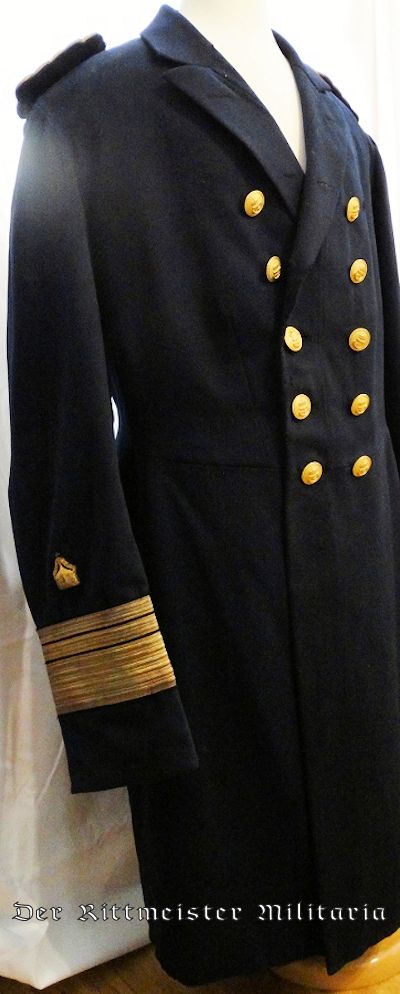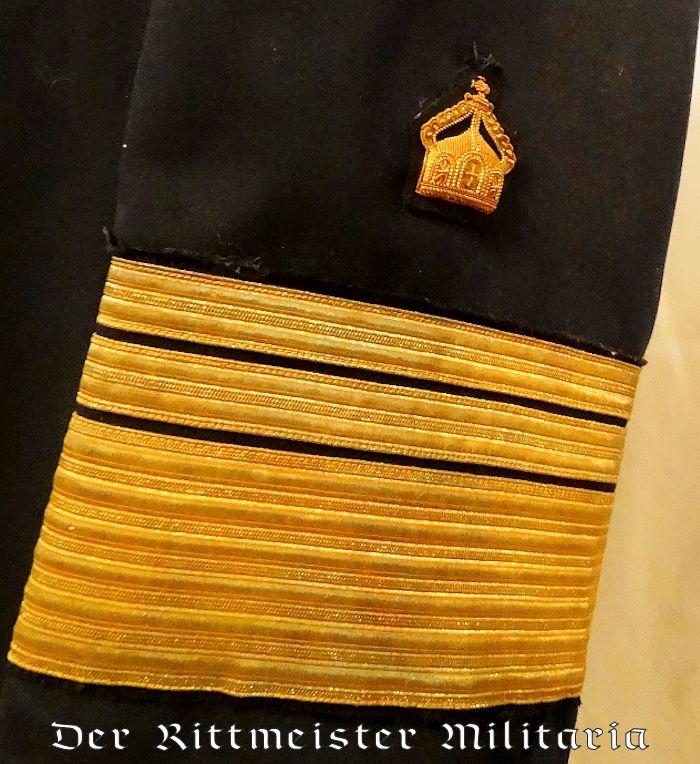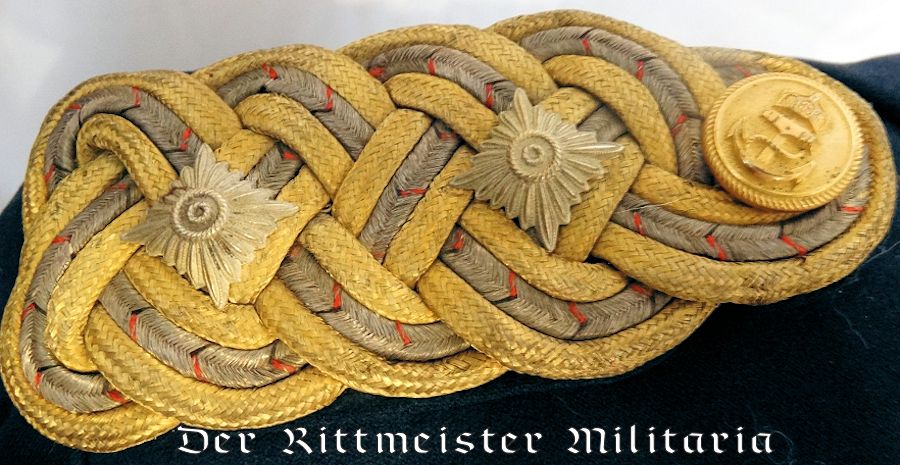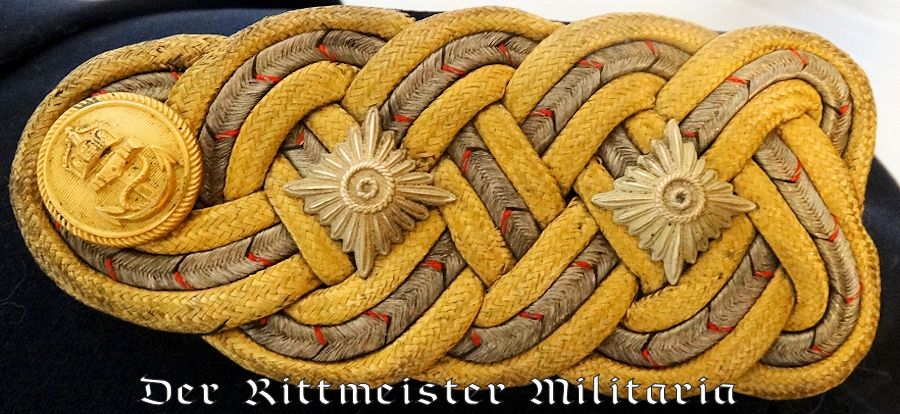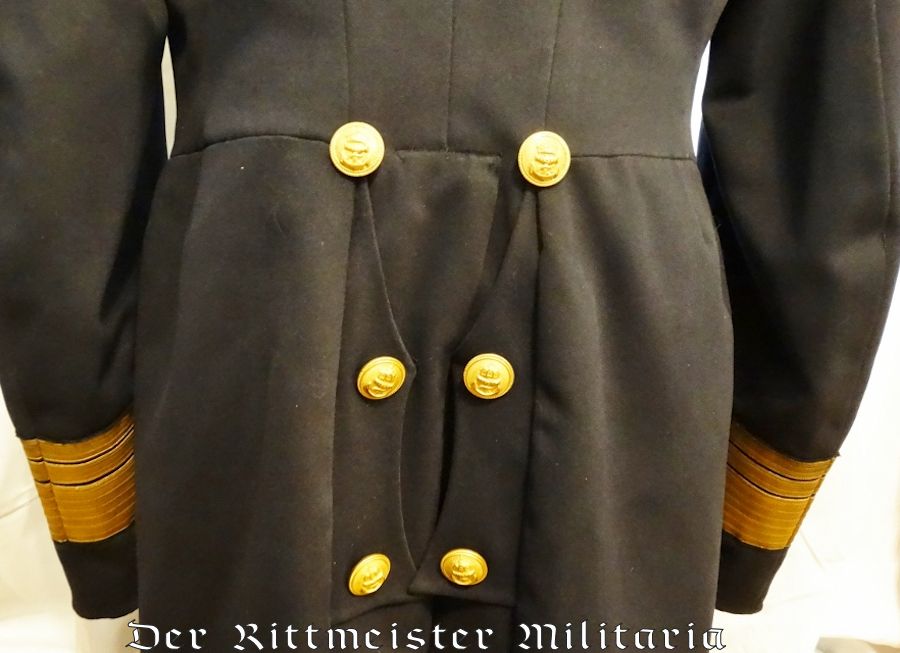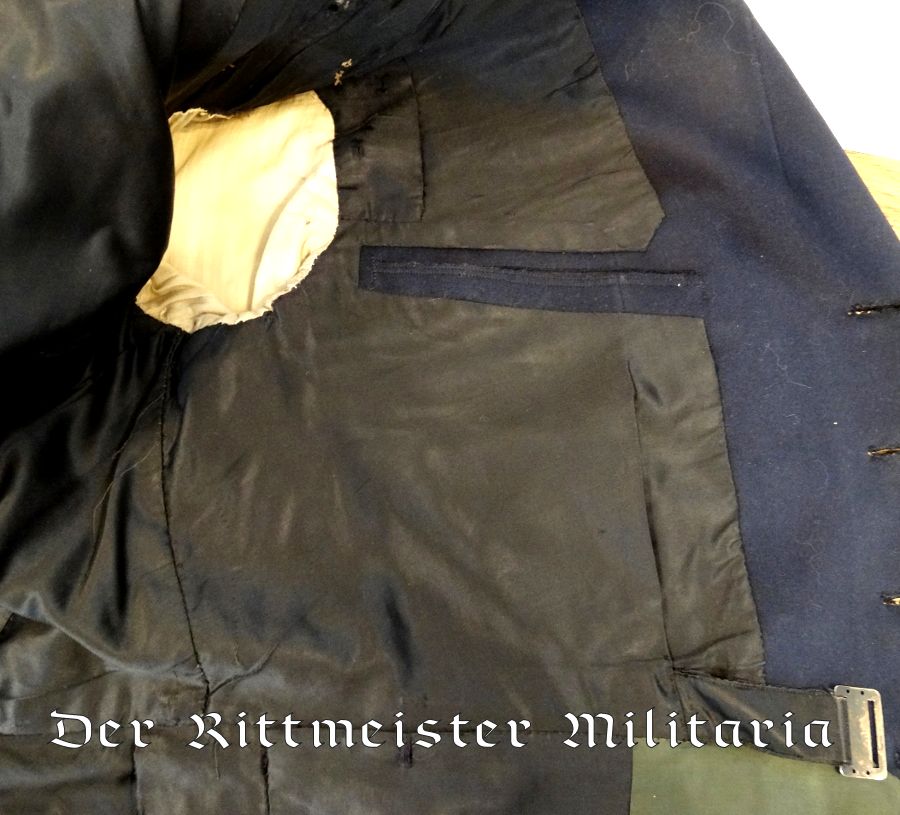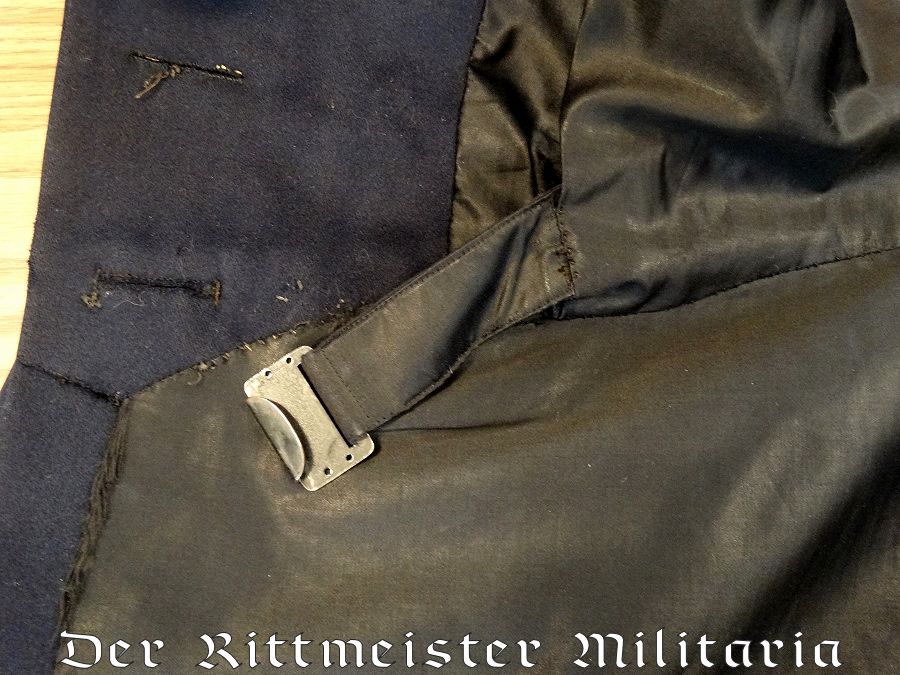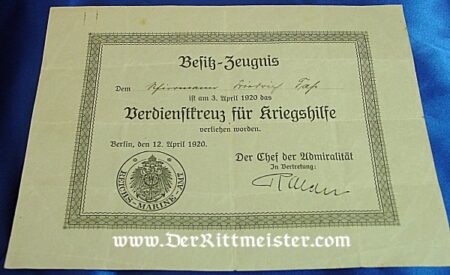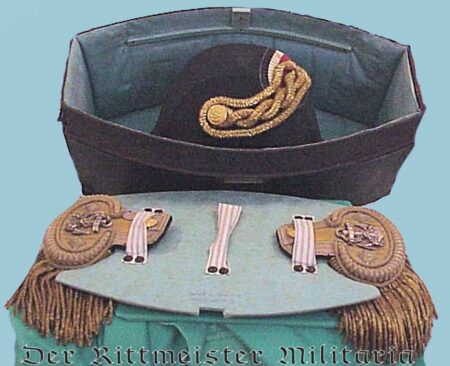Description
This is an amazing find for us at Der Rittmeister Militaria. Today we are offering a very special, full Admiral’s überrock. Finding tunics for General Officers is a hard task, although we are proud that our current inventory boasts tunics or complete General’s uniforms for Prussia, Württemberg, Saxony, and Braunschweig. Finding tunics for Kaiserliche Marine Admiräle is indeed a daunting task. Even tunics for junior officers are NOT easy to find. [We were blessed in the past to offer none other than Großadmiral Prinz Heinrich of Prussia’s überrock].
The Kaiserliche Marine possessed only four Admiräle levels. Unlike the Imperial German Army, which featured five Generals’ levels, the Navy did not sport a Generaloberst’s equivalent (the Army’s Generaloberst being its highest rank). The Navy Admiräle ranks included the four positions listed below, in lowest-to-highest order.
Konteradmiral
Vizeadmiral
Admiral
Großadmiral
For the most part, Admiral was the Kaiserliche Marine’s highest operational/tactical rank. Of the six men who achieved the Großadmiral’s rank, only ONE actually commanded fleet operations: Prinz Heinrich, Kaiser Wilhelm II’s younger brother. He commanded activities in the Baltic during WW I, and did not achieve his rank until 1909. The rest of the six included two who commanded the overall Kaiserliche Marine (Alfred von Tirpitz [1911] and Henning von Holtzendorff [1918]), and whose official titles were “State Secretaries of the Imperial Navy Office.” Another, Hans von Koester, received the rank in 1905, primarily as a thank-you when he was approaching retirement. The final two recipients were royals (Kaiser Wilhelm II and King Oskar II of Sweden), both of whom received the rank in 1901, the year in which it was originated.
So, a man who achieved an Admiral’s rank was a very high level naval officer who commanded great responsibility within the Kaiserliche Marine. Today, we are offering just such a man’s überrock. [The classic naval überrock was a frock coat that extended down its wearer’s legs, rather than stopping near the waist as did most tunics]. Our überrock is made from fine-quality, dark-blue, buttery-smooth wool. It sports a double row of gleaming gilt buttons (five-per-side) that run down the uniform’s center. The buttons display fouled anchors with Hohenzollern Crowns above them. The überrock’s left breast features a row of sewn-in loops for displaying a ribbon bar. The loops’ total width is 2.”
The shoulder boards are of the slip-on variety. Each features a small gilt Navy button, and the two silver pips typical of an Admiral’s shoulder boards. [It is one area where the Imperial German Navy’s shoulder boards differed from those belonging to the Army. For the Army, silver pips generally indicated an à la Suite officer, whereas gold pips signaled a staff or field-assigned officer. Navy shoulder boards were the exact opposite]. These shoulder boards feature “Russian rope” bullion, whose design displays alternating silver and gold rows. The silver bullion rope is imbedded with black chevrons. The shoulder boards have the dark-blue underlay characteristic of all Navy shoulder boards (a key point when confirming Navy status).
Each überrock sleeve displays a small gold bullion Hohenzollern Crown that measures 1 ” x 1 ½.” Each sleeve also reveals a wide gold bullion tape band that measures 2,” as well as two narrow gold bullion tape bands that each measure ” in width. It is here that we discover an anomaly. Two bands indicate a Vizeadmiral, while three stand for a full Admiral. I examined the shoulder boards closely, checking their size, fit, and etc. It is clear to me that they have been attached for a long time, and are NOT recent additions. [It is my view (and that of other knowledgeable collectors and experts) that the überrock’s owner never took the tunic to a tailor to have the other bullion band added after his promotion. As it is likely that a man of his rank owned several uniforms, it is quite possible our offering was an earlier tunic that he did not upgrade. He simply inserted the correct shoulder boards once he was promoted from Vizeadmiral to Admiral. Then he later purchased other tunics with the correct sleeve markings and shoulder boards].
The überrock’s reverse exhibits six more (three per side) large gilt buttons in its vent area. Its interior displays a magnificent, superior quality black silk lining. The inside lining possesses three large pockets. Two are slash examples, while the third is the more conventional vertical example. The entire liner is in excellent condition.
The überrock is in stunning condition, overall. We are pleased to share it with you today.
